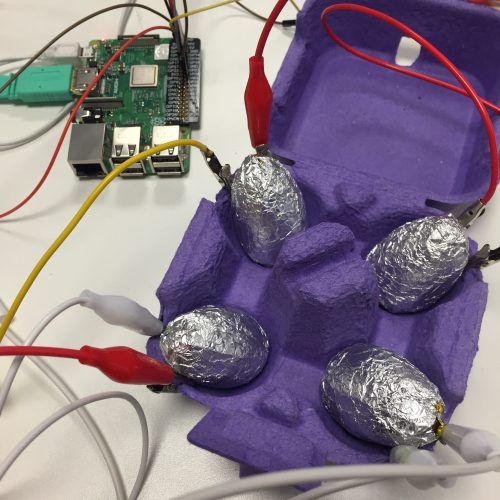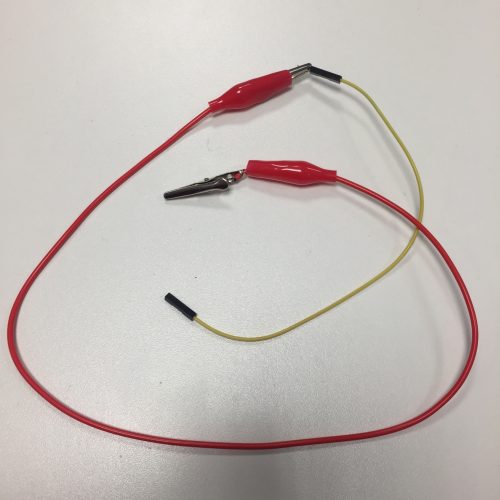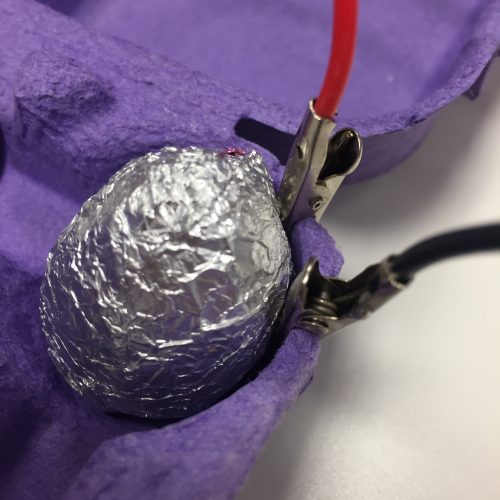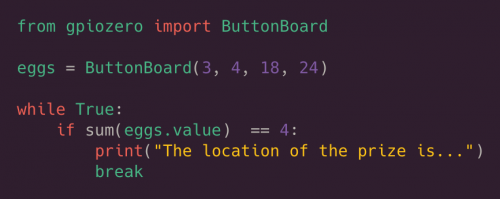Looking to incorporate some digital making into your Easter weekend? You’ve come to the right place! With a Raspberry Pi, a few wires, and some simple code, you can take your festivities to the next level — here’s how!

If you logged in to watch our Instagram live-stream yesterday, you’ll have seen me put together a simple egg carton and some wires to create circuits. These circuits, when closed by way of a foil-wrapped chocolate egg, instruct a Raspberry Pi to reveal the whereabouts of a larger chocolate egg!
Make it
You’ll need an egg carton, two male-to-female jumper wire, and two crocodile leads for each egg you use.

Connect your leads together in pairs: one end of a crocodile lead to the male end of one jumper wire. Attach the free crocodile clips of two leads to each corner of the egg carton (as shown up top). Then hook up the female ends to GPIO pins: one numbered pin and one ground pin per egg. I recommend pins 3, 4, 18 and 24, as they all have adjacent GND pins.

Your foil-wrapped Easter egg will complete the circuit — make sure it’s touching both the GPIO- and GND-connected clips when resting in the carton.

Wrap it
For your convenience (and our sweet tooth), we tested several foil-wrapped eggs (Easter and otherwise) to see which are conductive.
Raspberry Pi on Twitter
We’re egg-sperimenting with Easter deliciousness to find which treat is the most conductive. Why? All will be revealed in our Instagram Easter live-stream tomorrow.
– Werbung –
The result? None of them are! But if you unwrap an egg and rewrap it with the non-decorative foil side outward, this tends to work. You could also use aluminium foil or copper tape to create a conductive layer.
Code it
Next, you’ll need to create the code for your hunt. The script below contains the bare bones needed to make the project work — you can embellish it however you wish using GUIs, flashing LEDs, music, etc.
Open Thonny or IDLE on Raspbian and create a new file called egghunt.py. Then enter the following code:

We’re using ButtonBoard from the gpiozero library. This allows us to link several buttons together as an object and set an action for when any number of the buttons are pressed. Here, the script waits for all four circuits to be completed before printing the location of the prize in the Python shell.
Your turn
And that’s it! Now you just need to hide your small foil eggs around the house and challenge your kids/friends/neighbours to find them. Then, once every circuit is completed with an egg, the great prize will be revealed.
Give it a go this weekend! And if you do, be sure to let us know on social media.
(Thank you to Lauren Hyams for suggesting we “do something for Easter” and Ben ‘gpiozero’ Nuttall for introducing me to ButtonBoard.)
Website: LINK
Schreibe einen Kommentar
Du musst angemeldet sein, um einen Kommentar abzugeben.